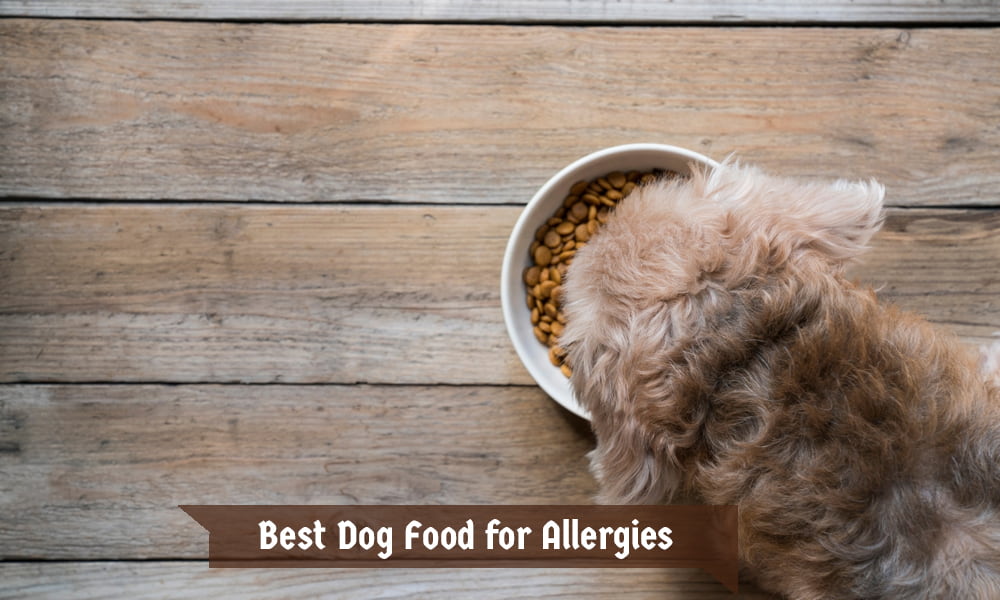
There are few things worse than seeing your dog unhappy, and if you suspect food allergies to an ingredient, you’re probably wondering what you can do to help. You might be thinking that you should change your dog’s food right away, but this is not necessarily the best option.
Before you can really determine the best dog food for allergies, you first have to understand what food allergies are and what ingredient causes them. The truth is, it’s not as straightforward as you think, and it can take some time to really get to the root of the problem.
Contents
- How can you tell if your dog is allergic to food?
- Symptoms of Food Allergies in Dogs
- The Most Common Food Allergies in Dogs
- Myths About Food Allergies
- Food Trials
- What Meat is Best for Dogs with Allergies?
- What Breeds are Prone to Having Allergies?
- How Can I Help My Dog with Allergies?
- How to Choose the Right Food for Your Dog
- Does Grain Free Dog Food Help with Skin Allergies?
- The Right Food for Dog Allergies
- What is the Best Dog Food for Dogs with Allergies?
- Blue Buffalo Wilderness High Protein
- Merrick Grain Free Limited Ingredient Diet Salmon & Sweet Potato Recipe Dry Dog Food
- Royal Canin Canine Care Nutrition-Sensitive Skin Care Dry Dog Food
- NUTRO Limited Ingredient Diet Adult Dry Dog Food Lamb & Sweet Potato Dog Kibble
- Wellness Simple Natural Limited Ingredient Dry Dog Food
- CANIDAE PURE Real Salmon Limited Ingredient Grain-Free Premium Dry Dog Food
- Petcurean Go Sensitivity + Shine Dog Food Salmon
- Blue Buffalo — Basics Limited-Ingredient Turkey and Potato
- Purina Pro Plan Veterinary Diets HA Hydrolyzed Chicken Flavor Canine Formula Dry Dog Food
- Taste of the Wild Grain Free High Protein Recipe – Pacific Stream Premium Dry Dog Food
- How to Switch Dog Food Without Getting Your Pup Sick
- What about Homemade Dog Food?
- Choosing the Best Dog Food for Allergies and Skin Allergies
How can you tell if your dog is allergic to food?
An allergy in dog and intolerance are often used interchangeably to describe when your dog has an abnormal reaction to eating an ingredient, but they are two very different things.
An allergy or hypersensitivity occurs when your dog has an immunologic reaction to something in its food, and it only occurs after your dog has already been exposed to the ingredient that’s causing the problem. This means that your dog was likely completely fine the first time it ate the ingredient causing the immune system reaction. It can take a long time for a food allergy to a single ingredient to develop, so you may not see symptoms until the dog has been exposed to the ingredient for quite a long time. Sometimes, this can take months. Other times, it takes years. All of a sudden, your dog may start having allergy symptoms after eating a dog food with ingredients that they’ve been eating for years.
Food intolerance to an ingredient is not the same as an allergy. The immune system is not involved with food intolerance, and it can happen the first time your dog is exposed. That said, food allergies, skin allergies, and intolerances present the same way in dogs and it might be difficult to tell the difference.
Symptoms of Food Allergies in Dogs
Food and skin allergies in dogs present in different ways than they do in humans. If a person is allergic to peanuts and they come into contact with one, they have a systemic response to some ingredients that can cause the airway to swell and, if not treated rapidly, can be fatal.
Dogs have other signs and symptoms, but they aren’t always able to communicate with you when they’re not feeling well. Here are some of the things to look out for to determine if your dog might have a food allergy or sensitivity.
- Diarrhea
- Vomiting
- Flatulence
- Skin irritation
- Itch or frequent scratching
- Inflammation
- Hair loss
- Ear infections
- Wheezing
- Sneezing
- Coughing
- Licking paws of feet
The Most Common Food Allergies in Dogs
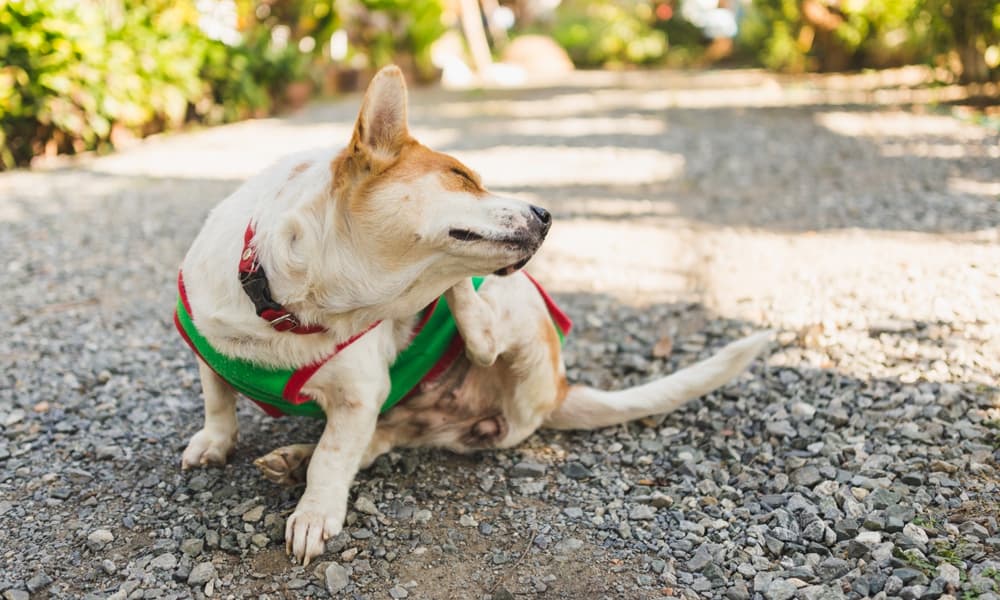
Dogs with true allergies usually react to protein ingredients in their dog food, whether animal or plant-based. Some of the most common causes of food allergies in dogs are beef, wheat, dairy, and chicken.
Myths About Food Allergies
A lot of people jump to conclusions about food allergies, but it’s important not to panic. There are several myths to be aware of when determining whether or not to consider food allergies for your dog. Let’s take a look at some commonly held beliefs about food allergies and whether or not they’re true.
The most common allergens are wheat, soy, corn, and plant-based ingredients.
As we mentioned, the most common allergens for dogs are beef, wheat, dairy, and chicken. In fact, in one study, the biggest culprit was determined to be beef and dairy with wheat coming in third. Soy and corn were very low on the list, with only a handful of incidents. Dogs develop more allergies to meat protein than they do to grains. That is why hypoallergenic best dog foods use alternative forms of protein than most common dog food, like salmon, bison, and lamb meal.
If your dog is still itchy after changing brands, it can’t be an allergy.
Dogs are allergic to a specific protein, so if you switch to a new food that has the same protein, they will still have the same reaction. For example, if your dog has a sensitivity to chicken meal and you switch to another brand that also contains chicken or chicken meal, your dog will still have an allergic reaction.
Sometimes, it can take a while to determine the specific ingredients that are causing your dog’s symptoms. You have to look very carefully at the ingredients list because some recipes may have been labeled as containing lamb or salmon as the main protein, but there may be chicken or beef hidden somewhere that could cause a reaction.
Your dog can’t be allergic to the food it’s been eating for years.
Dogs can develop an allergy at any time. In fact, it can take years for one to develop, so a type of food that your dog eats every day may one day start to be a problem.
Dogs always get an upset stomach when they have food allergies.
Dogs may develop an upset stomach when they have allergies to certain ingredients, but the most common symptom is skin allergies. If your dog has an upset stomach, it may be because of allergies, or it may be something else. If your dog has itchy skin allergies and some of the other common symptoms of allergies without a sensitive stomach, don’t assume that they do not have an allergy. If you notice any problem with your dog’s health, talk to your vet for guidance.
Food Trials
The only way to determine whether a dog has a true skin allergy to certain ingredients is to complete a food trial under the guidance of a veterinarian. There are two ways to do this. One way is to use a single novel protein source, meaning one that the dog has never been exposed to. If there has been no previous exposure, there is less chance of an immune system. response. This is why hypoallergenic dog foods use protein sources that aren’t as common in typical dog food recipes, including salmon, venison, duck, and even kangaroo.
The other way to do a food trial to check for allergies is to try a hydrolyzed diet. This means that the protein is broken down into very small parts that the dog’s immune system should not recognize as allergens.
When doing a food trial, the hypoallergenic food should be fed for about 10 weeks to see whether or not the dog has a response to it. Most dogs start to see their skin symptoms ease in as little as four weeks while other breeds take a longer time to respond. During this period, it is important not to give the dog anything except hypoallergenic food. Any other foods, treats, table scraps, and even some medications will disrupt the trial.
After the trail, the skin allergy symptoms should stop, which is considered confirmation that a food allergy exists. At this point, a challenge is done where the dog is fed their normal food to see if symptoms return. In the event of a true allergy, symptoms should come back within two weeks of returning to the original diet.
When the dog is back on hypoallergenic foods and tolerating them well, a single protein may be added in to narrow down what exactly is causing the problem. For example, pieces of plain chicken can be added to rule out or confirm a chicken allergy so you know what to avoid in the future.
What Meat is Best for Dogs with Allergies?

The most common meats that lead to skin allergies in dogs are beef and chicken, although this is a little misleading. It’s not that these two types of meat have something in them that most dogs are allergic to, it’s that these are the two proteins that are most commonly used in commercial dog food. Because allergies in dogs develop over a long period, it is more likely that they eat a lot of beef and chicken meal throughout their lives, which leads to the allergy.
This is exactly why hypoallergenic foods contain protein ingredients that aren’t in everyday dog foods, like duck, fish meal, and venison. Since these are not proteins commonly used in the best dog food, it’s unlikely any dog has eaten them long enough to develop an allergy to them.
What Breeds are Prone to Having Allergies?
Any dog can develop a food allergy to any ingredients, but some breeds are more prone to allergies than others. You should always be on the lookout for symptoms of allergies, but the following breeds are more likely to develop them:
- American Pitbull Terrier
- Bichon Frise
- Boxer
- Brussels Griffon
- Bulldog
- Bull Terrier
- Cocker Spaniel
- Dachshund
- German Shepherd
- Golden Retriever
- Labrador Retriever
- Lhasa Apso
- Maltese
- Shar-Pei
- Shih Tzu
- Soft Coated Wheaten Terrier
- Pug
- West Highland White Terrier/Westie
How Can I Help My Dog with Allergies?

The best thing you can do for your dog with skin allergies is to work with your vet and do a trial diet to determine what the protein source of the allergy is. It’s generally not a good idea to randomly eliminate ingredients from your dog’s diet because it could lead to malnutrition, which causes a lot of other problems.
Talk to your vet for advice if you think your dog has allergies to a specific ingredient. Depending on the symptoms and how severe they are, you may need to use a hypoallergenic food that’s only available by prescription as you work to identify the allergen.
Another thing you can do to help a dog with allergies is to treat the symptoms. If your dog is experiencing sensitive skin allergies or irritation and itching, an oatmeal bath or coconut oil can help soothe it.
How to Choose the Right Food for Your Dog
Choosing the best dog food can be overwhelming, even more so when you have to consider food allergies. Here are some things to think about when choosing the right food for your dog.
Important Features to Consider
1. Know your dog’s needs, beyond food allergies. You have to take into account your dog’s size, age, and health. Dogs that are overweight may need special diets, and large breeds have different nutritional requirements than small ones. Senior dogs often need extra nutrition, too. For example, mature formulas usually include glucosamine and chondroitin to help support healthy joints and fight inflammation.
2. Consult with professionals. The best idea is to talk to your vet about your dog’s diet. If your dog has allergies, they can teach you how to do a proper food trial and work out how to reintroduce foods to determine the allergen. Be sure to tell your vet if your dog is experiencing signs of allergies, like itchy skin allergies, GI upset, or missing hair, and ask for advice about how to proceed.
3. Read the labels carefully. The ingredients on food labels are listed in order from most to least, so if you want to feed your dog food with a high amount of protein, choose a food that has protein listed as the first few ingredients. This is especially important when your dog has allergies.
Does Grain Free Dog Food Help with Skin Allergies?

The best grain-free foods may help with skin allergies, but it depends on what is causing the allergy. If your dog is allergic to grain, then yes, grain-free dog food may help with skin allergies. But if a meat protein is causing the problem, it’s unlikely a grain-free food will have the same effects.
There are a lot of myths about dogs and grains, and it’s important to understand the truth when trying to find the best dog food for your pet. Let’s take a close look at some of the most common misconceptions:
All grains are just filler.
Filler is something that doesn’t have any nutritional value, but whole grains do provide essential vitamins, minerals, and fatty acids, so they technically are not filler. As we mentioned, grains are not the most common skin allergen for dogs. Whole grains actually have some proteins that are easier for some pets to digest than animal proteins.
There are no carbs in grain-free pet food.
Grain-free dog food has carbs, but they come from other sources that may actually have higher carb content than grains. Sweet potatoes and beet pulp, for example, have more carbs than corn. Note that grain-free diets that are lower in carbs may have more fat or calories, so, again, read the label carefully. Some grain-free diets swap out grains for highly refined starches or things like beans, beet pulp, lentils, and peas that don’t offer any nutritional value and may cause allergic skin and GI problems.
Grains are the cause of food allergies.
As we’ve already mentioned, grains do not cause most food allergies. True food allergies in pets aren’t very common, and true allergies to grains are even less common. Grain-free foods may help your dog if they have a true grain allergy, but a true grain allergic reaction is not that common.
Eating grains leads to gluten intolerance.
True gluten intolerance in dogs is extremely rare. In fact, only a handful of Irish Setters from a single family has been known to have a skin or GI reaction to eating gluten. They do not suffer from Celiac’s disease in the same way that people do.
The Right Food for Dog Allergies

If you’re looking for the best food for a dog with allergies, there are some things to consider to reduce the chance of intolerance or another allergic reaction, including:
- Novel proteins. As we mentioned, these are proteins that are less commonly used in dog food that your dog has likely never had in large quantities before. These include rabbits, salmon, herring, and bison. Be sure to pay attention to the entire ingredients list, too. Some foods will use a novel protein as the main ingredients but add smaller amounts of more common proteins, like chicken meal and beef, later in the list.
- Dairy-free. Most dogs cannot tolerate dairy products and they can lead to allergies and intolerance.
- Grain-free. Although most allergic reactions are caused by meat protein, some pet owners believe that grain-free foods help their dogs.
- No fillers. Fillers like corn and soy don’t have any nutritional value for your dog. They often come from cheap sources and can cause unnecessary skin or GI problems.
What is the Best Dog Food for Dogs with Allergies?
If you’re sure that your dog has a food allergy, some great dog foods on the market can really make a difference. If you’re not sure which one is best for your dog, talk to your veterinarian.
Blue Buffalo Wilderness High Protein
Blue Wilderness is a well-known brand and the high protein formula is available in multiple flavors. For dogs with allergies, stay away from the chicken. The duck or salmon fish meal is the way to go. These high-protein formulas help your dog build and maintain lean muscle, and because they use novel proteins, there’s less chance of allergic reactions.
This Blue Buffalo dog food is grain-free with healthy carbohydrates from peas and potatoes. Your dog will also benefit from omega 3 fatty acids and omega 6 fatty acids for coat and skin health and Blue Buffalo LifeSource Bits, a proprietary blend of vitamins and minerals that delivers well-rounded nutrition.
Blue Buffalo dry dog food contains no by-product meals, wheat, corn, soy, or artificial colors or preservatives.
Merrick Grain Free Limited Ingredient Diet Salmon & Sweet Potato Recipe Dry Dog Food
Another great option for a limited ingredient diet, grain-free best dog food is this salmon and sweet potato recipe from Merrick. The first ingredient is real deboned salmon, a novel protein that your dog will love. This best dog food is completely gluten-free and contains no dairy, eggs, corn, soy, or what, and they never use any artificial flavors, colors, or preservatives.
There are only 10 key limited ingredients: salmon, salmon meal, sweet potatoes, potatoes, peas, sunflower oil, flaxseed, pea protein, potato protein, and natural flavors. This mix of limited ingredient diet was carefully selected to deliver the amino acids, omega 3 fatty acids, omega 6 fatty acids, minerals, and vitamins your dog needs to stay healthy.
Royal Canin Canine Care Nutrition-Sensitive Skin Care Dry Dog Food
Royal Canin is a popular brand known for its breed-specific formulas, and its Sensitive Skin Care dry dog food is one you should definitely take a look at if your dog’s allergies cause dry, itchy skin allergies.
It’s enriched with omega-3 fatty acids and amino acids to reinforce the skin barrier and nourish the coat. Plus, they support healthy digestion with highly digestible proteins for optimal stool quality.
One of the things that’s so impressive about this Sensitive Skin dog food is that it’s available in recipes tailored to small, medium, or large breeds so you know your dog is getting what it needs, regardless of its size.
NUTRO Limited Ingredient Diet Adult Dry Dog Food Lamb & Sweet Potato Dog Kibble
The Nutro limited-ingredient diet lamb formula is made using just 10 key ingredients, including deboned pasture-fed Australian or New Zealand lamb, lamb meal, dried potatoes, and dried sweet potatoes.
This formula also has added vitamins, minerals, and other nutrients to support your dog’s total health. There are no fillers, gluten, or artificial additives and it avoids ingredients like dairy, soy, wheat, and corn that commonly cause skin allergies. Perhaps the best thing about this dog food is that NUTRO offers a satisfaction guarantee. If you don’t like it, they’ll give you your money back.
Wellness Simple Natural Limited Ingredient Dry Dog Food
Wellness Simple is a popular choice for dogs with skin allergies. There are four flavors to choose from: salmon and potato, duck and oatmeal, lamb meal and oatmeal, turkey and potato. Each of these uses a main animal protein source that is considered novel with a carbohydrate that is easy to digest and unlikely to cause allergic reactions. Each dog food has limited non-GMO ingredients, no fillers, and no grains.
Another great thing about this brand is that each formula includes natural prebiotics to support GI health, antioxidants to support the immune system, and omega 3 and omega 6 fatty acids for skin and coat health. Plus, there is glucosamine for joint health and taurine for heart health. All of these recipes are made in the USA using ingredients sourced from around the globe.
CANIDAE PURE Real Salmon Limited Ingredient Grain-Free Premium Dry Dog Food
Canidae Pure has limited ingredients and is grain-free, making it a good choice for a dog with skin allergies. This salmon and sweet potato dog food is a great choice, but there are other options, too, including wild boar and garbanzo bean; bison, lentil, and carrot; and lamb, goat, and venison. All of these flavors use novel proteins that taste great and are less likely to set off an allergic response in your dog.
There are a lot of other great things about this dog food, too, including probiotics to support healthy digestion, antioxidants for a healthy immune system, and omega 3 fatty acids and omega 6 fatty acids for coat and skin health. There are no fillers, gluten, or artificial additives; just simple ingredients that taste great and keep your dog happy and healthy.
Petcurean Go Sensitivity + Shine Dog Food Salmon
Petcurean put together its GO! Sensitivity line to support pets with specific dietary needs, using a limited ingredient dog food recipe, and using salmon as a single source for novel protein. This dog food is also grain, gluten, and potato free, and contains no corn, wheat, soy, chicken, chicken fat, or by-product meals, and is good for a sensitive stomach.
Ingredients include deboned salmon, salmon meal, tapioca, pean, lentils, chickpeas, and other vitamins and minerals. Dried chicory root acts as a prebiotic to encourage healthy digestion, plus there’s taurine for heart health and omega 3 fatty acids and omega 6 fatty acids for smooth skin and a healthy coat.
Blue Buffalo — Basics Limited-Ingredient Turkey and Potato
Here’s another great option from Blue Buffalo from their Basics brands, which uses turkey and potato to minimize food sensitivities and encourage health digestions. Other high-quality ingredients in this Blue Buffalo include pumpkin, pea fiber, and turkey mail, which is a good natural source of chondroitin to support joint health. Fish oil and flaxseed provide the necessary fatty acids for skin and coat health.
This dog food also includes Blue Buffalo’s LifeSource, a precise blend of vitamins, minerals, and antioxidants to support the immune system and the requirements of every life stage. There’s no chicken, beef, corn, soy, dairy, eggs, or wheat, and no artificial flavors or preservatives in this Blue Buffalo hypoallergenic dog food.
Purina Pro Plan Veterinary Diets HA Hydrolyzed Chicken Flavor Canine Formula Dry Dog Food
If your dog has significant skin allergies and your vet recommends a special diet, take a look at this veterinary diet from Purina Pro Plan. This dog food is specially formulated for dogs who cannot digest meat proteins and need something that’s more specialized.
This formula uses hydrolyzed protein, which is when water is used to break down protein into smaller pieces that can be safely ingested and broken down without the body reacting to them. It also contains a single source of carbohydrates to make it even easier to digest.
Again, this is a veterinary diet and can only be sold under the supervision of a veterinarian, so Amazon will verify the order with them before shipping it to you.
Taste of the Wild Grain Free High Protein Recipe – Pacific Stream Premium Dry Dog Food
Taste of the Wild has a lot of grain-free options that are appropriate for dogs with skin allergies, but its Pacific Stream dog food is particularly good because of the unique flavor. The top five ingredients are salmon, ocean fish meal, sweet potatoes, and peas. If your dog has had bad reactions to chicken or beef and lost their appetite, the unique flavor of this dog food might give them their appetite back.
The sweet potatoes add easily digestible carbs, and greens and fruits supply essential vitamins, minerals, and antioxidants, which makes it a great choice to support the immune system. Plus, the blend of omega 3 fatty acids and omega 6 fatty acids boosts skin and coat health There are no fillers or additives and no corn, grain, wheat, or added colors or preservatives.
How to Switch Dog Food Without Getting Your Pup Sick
Now that you know what the best dog foods for skin allergies are, it’s time to talk about how to switch your dog’s diet safely. Most people know that you have to make this change gradually, but what does that mean?
The truth is that it depends on the dog. Some dogs have an iron stomach and can eat anything without any problems at all. Others have a sensitive stomach and need to have a slower transition than normal.
For most dogs, you can follow this transitional plan:
- Day 1 – Mix 20% new food with 80% old food
- Day 2 – Mix 40% new food with 60% old food
- Day 3 – Mix 60% new food with 40% old food
- Day 4 – Mix 80% new food with 20% old food
- Day 5 – Use 100% new food
If during this process your dog experiences GI problems or stops eating, stop the transition right away and call your vet. There’s a chance that your dog is just not tolerating the new food and you may need to try something else. Or, you just may need to transition a little slower.
Sometimes, depending on the dog’s health, the vet may prefer a faster transition so the effects of the new diet kick in immediately, but it is not advisable to try this approach unless your vet suggests it. An exception is if you’re doing a food trial, your vet will tell you how to begin and what to look out for.
What about Homemade Dog Food?
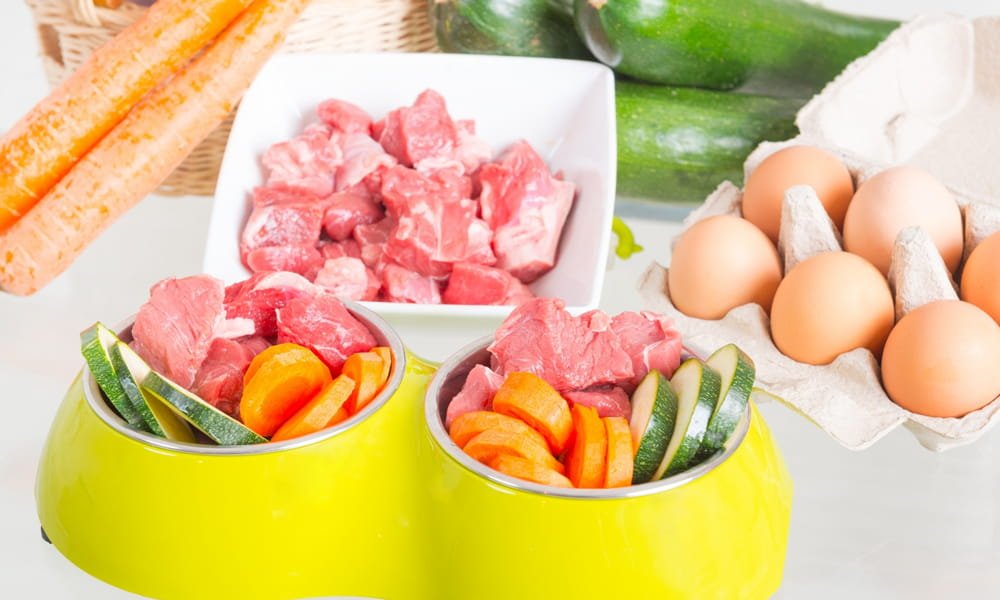
Making homemade dog food is tempting for dogs with skin allergies because it’s the best way to have complete control over what your dog is eating. Making nutritionally sound, limited ingredient homemade dog food is tricky, so you have to be sure you’re doing it right. Unfortunately, there are not many sources that provide science-backed information as to how to safely prepare home-cooked meals for your dog.
Believe it or not, there is no hard evidence that cooking for your dog is nutritionally beneficial, especially when there are so many options for commercially prepared foods. There are a lot of myths out there about dog food ingredients, but if you’re careful about reading labels, store-bought dog food is great and provides the well-rounded nutrition your dog needs.
Here are some common mistakes to avoid if you try cooking for your pet at home:
1. Not using the right sources. There are a lot of blogs and websites out there that have dog food recipes, but unless the people writing these recipes are veterinarians or dog nutritionists, they may not be nutritionally sound. Some recipes may even be dangerous, leading to deficiencies or excesses of certain vitamins and minerals in your dog’s diet.
2. Not preparing nutritionally sound food. Dogs need about 40 nutrients to stay healthy, and it’s very easy to miss something when you’re cooking your own dog food. The wrong amount can lead to malnourishment or obesity, conditions that lead to a lot of health problems and maybe fatal if sustained for too long.
3. Using ingredients that aren’t safe for dogs. There are a lot of foods that dogs cannot eat, including:
- Avocado. Avocado contains persin, and if your dog is allergic to it, eating avocado can lead to vomiting and diarrhea.
- Almonds. Almonds are not toxic to dogs like some other nuts are, but they can be choking hazards.
- Bone fat. Even though some fat is healthy for dogs, too much of the wrong kind – like fat trimmed from meat – can lead to pancreatitis.
- Chocolate. Dogs should never eat chocolate. Even just a little can be toxic.
- Cinnamon. Cinnamon isn’t toxic to dogs, but it is an irritant and can irritate the inside of their mouths. It may cause respiratory problems if inhaled.
- Garlic. Dogs cannot eat garlic or other members of the same plant family, including leeks and onions. Garlic, though, is five times as toxic to dogs and can lead to anemia, which can cause weakness and cause the dog to collapse.
- Grapes and raisins. Even just a small amount of grapes and raisins can be harmful to your dog and lead to kidney failure.
- Macadamia nuts. This is one of the most toxic foods to dogs and can cause vomiting, elevated body temperature, lethargy, and the inability to walk.
- Raw eggs. Some people like to crack a raw egg over their dog’s food, but vets warn against this as the raw egg may contain salmonella or e. Coli.
- Raw meat. Although our dogs’ ancient ancestors ate raw meat, it’s actually unsafe as it may contain bacteria that can lead to food poisoning, vomiting, and dehydration.
- Xylitol. This is an artificial sweetener commonly found in diet foods and some baked goods that is extremely dangerous to dogs. It can lead to a blood sugar crash and cause liver failure.
4. Not considering their health risks. Some dogs are prone to developing certain conditions, and the wrong food can increase these risks. For example, research shows that dogs eating a grain-free, high-fiber, legume-based homemade diet are at risk of developing cardiomyopathy. The dog’s immune system may suffer as well.
A lot of people think that the best food is homemade food, but there are a lot of reasons to avoid this route. Not only are there risks if the recipes aren’t put together correctly, but there are also many high-quality limited ingredient dog food options on the market that use novel proteins and grain-free carbohydrates that are just as good as something you’d make yourself.
Choosing the Best Dog Food for Allergies and Skin Allergies

There are a lot of things to consider about allergic dogs and choosing high quality best limited ingredient dog food. The first thing you have to do is make sure your dog actually has a food allergy, and the best way to do that is to talk to your vet. Make a list of the symptoms your dog is experiencing and work together to make a plan.
Chances are your vet will recommend a food trial to determine if your dog actually has an allergy and what is causing it. Once you know for sure what is causing the problems, you can choose dog food without those ingredients to help ease your dog’s skin symptoms.
It’s important to remember that a dog food trial using limited ingredient dog foods to find out if your dogs allergic reaction may take a long time to complete, as many as 10 weeks. After the trial, the best thing to do is to add a single protein back into their diet to see what they do and do not tolerate.
Remember that a novel protein is important. Most skin allergies are due to animal protein, and since they develop over time, you have to switch to a protein your dog hasn’t had a lot of exposure to if you want to stop the reaction. For example, if you determine your dog is allergic to chicken, avoid foods with chicken by choosing recipes with limited ingredients with duck, fish meal, salmon, bison, kangaroo, or some other unique protein. If your dog has a severe allergy, your vet may recommend the best prescription dog foods that use single-source hydrolyzed protein to make sure they’re getting the balanced nutrition they need to stay happy and healthy. Omega 3 fatty acids and omega 6 fatty acids are essential, too, for skin and coat health.
We know this can all seem a little overwhelming, especially when you have a dog that’s counting on your to sort it out. The best thing to do is to talk to your vet for advice, then switch to one of the best hypoallergenic dog foods we’ve reviewed.
I grew up in a household that was filled with animals. I believe that my fate as a dog-loving person was sealed in early childhood since my parents owned several dogs of varying sizes and breeds. There was no choice but to take care of and learn about dog habits and the best animal care practices — otherwise, I’d be clueless about how to go about the creatures I was surrounded by day and night.
As a life-long puppy lover, I know a thing or two about dogs and how to go about caring for them in the best way possible. Although I’m not a professionally trained dog behaviorist, trainer, or veterinarian, all of my knowledge and experience with canines comes from a place of love and a deep-rooted passion for dogs and animals in general.
Seeing as dogs kept me company throughout every stage of my life, I decided to follow a different path in my academic life and obtained a Bachelor’s and Master’s degrees in Marketing Management and Digital Advertising, which ultimately allowed me to combine my professional training and personal experience by creating the ultimate dog lover’s resource website! Along with my husband, Dave, I run MySweetPuppy for like-minded dog lovers who want to have a single, clear, and reliable information source about anything and everything related to dogs and their well-being.

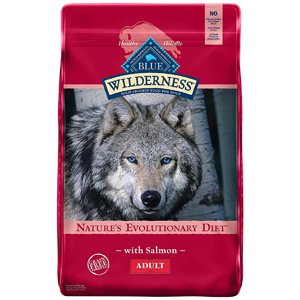
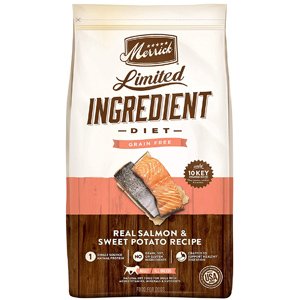
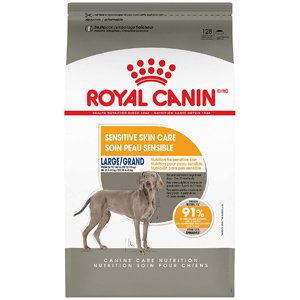
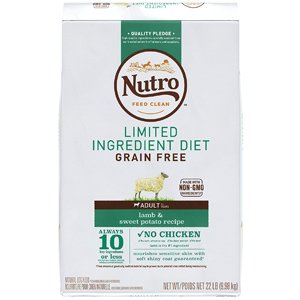
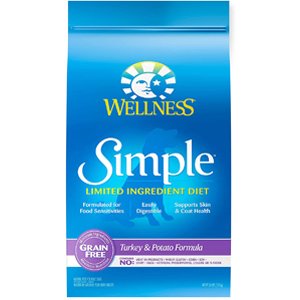
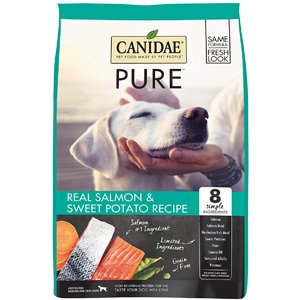

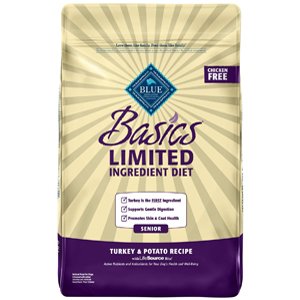
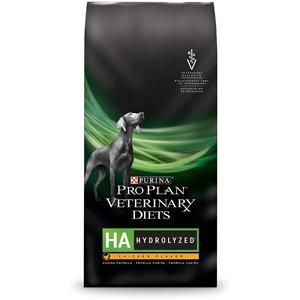
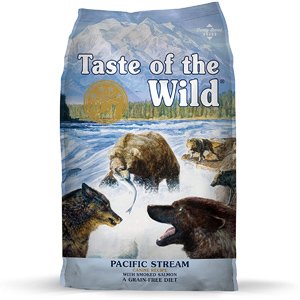
![The Best 4 Low Sodium Dog Foods [2021 Buyer’s Guide]](https://mysweetpuppy.net/wp-content/uploads/2015/12/low-sodium-dog-food1.jpg)
